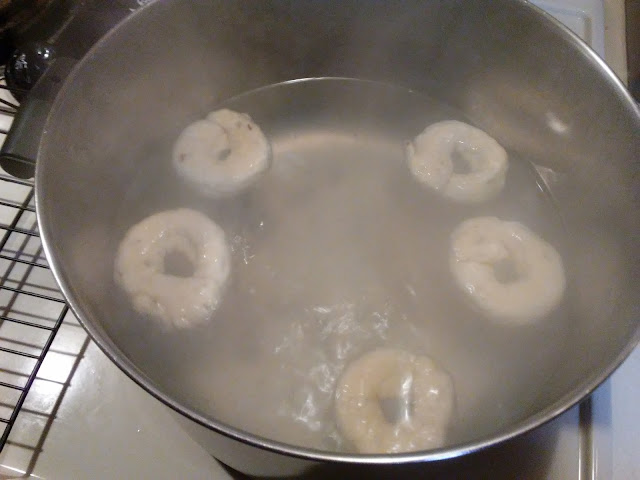Biscotti are good any time but they make great Christmas treats this time of year to have around the house and to give to friends. The basic recipe for biscotti is very simple but where they really get a personality is by making use of a wide array of complimentary ingredients - dried fruit bits like cranberries, candied citrus peel, almonds, pistachios, fennel seeds, chocolate bits. They can also be dipped in either white or dark chocolate. But don't go crazy and turn them into little fruit cakes, just stick with one or two additions. Here is a basic recipe I use, just substitute the pistachios and candied orange peel for one or two other ingredients that you like.
Ingredients - this will make about 24 - 4" x 1 1/2" biscotti
1 cup shelled
unsalted pistachios
1/3 cup candied lemon or orange peel
1/2
cup (1 stick) unsalted butter - softened
3 eggs
1 cup
sugar
1
teaspoon vanilla extract
3 1/2
cups all-purpose flour
1
teaspoon baking powder
1/2
teaspoon salt
Directions
*** If you are shelling the pistachios yourself, double check to make sure no bits of shell haven't fallen in with the pistachio meat. It's not fun to bite into a hard piece of pistachio shell.
Preheat
the oven to 350 degrees F.
Lay
the pistachios on a cookie sheet in a single layer. Bake for 10 minutes or
until the nuts are lightly toasted. Remove from the oven.
In an
electric mixer, beat the butter until light and fluffy. With the mixer running (or
by hand, because this is a hard dough), gradually add the eggs, sugar, and
vanilla; mix until creamed. Add the flour, baking powder, and salt. Mix the
dough until smooth.
Using a wooden spoon, or better - dig in with your hands - mix in the pistachios and candied orange peel until
evenly distributed.
Put
the dough on a lightly floured surface and cut in half. Roll each half into a
log, each 12 inches long by 1-inch high. Place the logs on a parchment paper
lined cookie sheet and bake for 35 minutes or until the bottoms are lightly
brown.
Let the logs cool for 5
minutes and then place on a cutting board. Slice each log on a diagonal into 1-inch
thick pieces. Put the biscotti back on the cookie sheet and bake 5 minutes. Turn
the cookies over and bake the other side for another 5 minutes. Store the biscotti in an airtight container.











